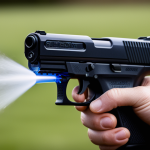Understanding Performance Anxiety in Ice Skating
Performance anxiety in ice skating is a common phenomenon, marked by a fear of underperforming. This anxiety is unique to skaters, given the high-stakes nature of performances where every movement counts. Symptoms often include increased heart rate, sweating, tremors, and negative thoughts, which can hinder execution of skills. Addressing these symptoms is crucial to achieving optimal skating performance.
Skaters must understand that managing anxiety isn’t just about reducing nervousness; it’s about enabling the body to perform at its best. Mental preparation plays a critical role here, as it involves training the mind to remain calm and focused. Techniques such as visualization and mental rehearsals can help skaters prepare for performances mentally, reducing the impact of anxiety symptoms. By incorporating these practices into their routines, skaters can enhance their readiness and performance on the ice, much like athletes in more traditional sports.
Also to see : Your guide to the best gel blasters in the uk
Furthermore, addressing anxiety helps in building confidence, which is essential for peak performance. Skaters who actively work on their mental preparation and who understand their anxiety are better equipped to face the challenges of competition and succeed on the ice.
Breathing Exercises to Calm Nerves
Breathing techniques are vital in managing performance anxiety, particularly for ice skaters. These exercises help regulate the body’s stress response, allowing skaters to maintain a calm and focused mind. Techniques such as diaphragmatic breathing and the 4-7-8 method are specifically beneficial. Diaphragmatic breathing involves taking deep breaths through the nose, filling the abdomen, and exhaling slowly through the mouth. This technique enhances oxygen flow, reduces heart rate, and promotes relaxation.
In the same genre : Top Athlete Recovery Strategies: Boost Performance After Competition
The 4-7-8 method consists of inhaling through the nose for four seconds, holding the breath for seven seconds, and exhaling through the mouth for eight seconds. This pattern balances the nervous system, thus helping in calming pre-performance nerves.
Incorporating breathing exercises into a pre-skate routine offers a practical way for skaters to manage their anxiety and boost their performance readiness. Evidence suggests that practising these techniques regularly can significantly reduce anxiety, making the skater feel more in control. By mastering breathing techniques, skaters can enhance their mental preparation, ensuring they are both physically and mentally ready to perform at their peak.
Visualization Techniques for Ice Skaters
Visualization is a cognitive process that engages mental imagery to enhance performance. For ice skaters, it serves as a pre-performance tool that fosters mental readiness. Visualization involves envisioning precise movements, successful routines, and positive outcomes. This method, backed by sports psychology, builds neural pathways related to actual physical execution.
To practice effective visualization, begin by finding a quiet space, free of distractions. Start with controlled breathing to achieve a relaxed state. Once calm, imagine yourself performing a skate routine with detail, from the entry onto the ice to landing tricky maneuvers. Use all senses: feel the ice beneath your blades, hear the crowd’s applause, and see yourself executing flawlessly. Repeat regularly in your pre-performance routine to solidify mental images.
Skaters like Evgenia Medvedeva and Nathan Chen have utilized visualization techniques, crediting them for increased confidence and reduced anxiety. These examples underscore the impact of visualization as part of mental preparation. By making it a routine, skaters can improve focus, alleviate performance anxiety, and potentially enhance competition outcomes through a strengthened mental framework. This tool proves invaluable in creating a mindset conducive to success on the ice.
The Role of Mental Rehearsal
Mental rehearsal plays a pivotal role in enhancing performance practice among ice skaters. It involves cognitively envisioning and repeatedly running through skating routines, aimed at refining skills without physical execution. This technique fosters confidence building, crucial for delivering flawless performances under competitive pressure.
Effective mental rehearsal for ice skating combines vivid imagery with emotional engagement. Skaters should create a serene environment, focusing intently on each move of their routine. Visualizing every detail, from the sensation of gliding across the ice to successfully landing jumps, strengthens the neural connections mirroring physical actions.
Techniques to incorporate mental rehearsal include:
- Setting specific rehearsal goals
- Combining mental imagery with physical warm-ups
- Focusing on areas that require improvement in coordination
Integrating mental rehearsal with regular training routines prepares skaters emotionally and mentally, reinforcing muscle memory and enhancing overall performance. The connection between picturing success and actual achievement is underscored by its contribution to self-assurance.
Practitioners find that mental rehearsal instills a sense of preparedness, directly translating to improved execution during competitions. Notably, many elite skaters attribute their competitive edge to this method, highlighting its critical role in achieving heightened performance confidence.
Building Confidence Through Preparation
Confidence building is foundational for ice skaters aiming to enhance their performance readiness. The link between thorough preparation and increased confidence is profound; as athletes refine their skills, they inherently boost self-assurance. This is particularly crucial in skating, where graceful execution requires not just technique but also a belief in one’s abilities.
Preparation strategies can include setting realistic goals, maintaining consistent practice routines, and focusing on incremental improvement. These strategies help in developing a solid foundation, enabling skaters to perform smoothly under pressure. One effective tip is to simulate competition conditions during practice. By training in an environment that mimics the competitive atmosphere, skaters can familiarize themselves with potential stressors, reducing their impact during actual events.
Anecdotes from seasoned skaters highlight the transformative power of preparation; they note a marked enhancement in performance when they engage in rigorous and structured training. For instance, Olympic skaters often speak about dedicating specific periods solely to honing mental and physical skills ahead of key competitions. Such dedication underscores that with targeted practice, skaters don’t just prepare their bodies, but also their minds, fostering confidence and readiness on the ice.
Maintaining Composure During Competition
Staying composed in the competitive world of ice skating is essential for achieving optimal performance. During competitions, the key lies in maintaining a steady focus, even amidst the storm of pressure and distractions. Skaters often grapple with performance anxiety, but mastering composure can be a game-changer.
Competition strategy begins with developing a pre-competition routine that includes mental and physical warm-ups. This helps in centering focus and calming nerves. Techniques such as grounding exercises and mindfulness can effectively shift attention away from anxiety-inducing thoughts.
Managing distractions also plays a vital role. Skaters should practice selective attention—focusing on crucial elements of their performance, like specific moves or timing. This reduces susceptibility to external interruptions.
Insights from coaches suggest fostering a mindset that embraces mistakes as learning opportunities rather than failures. Seasoned skaters emphasize the importance of trusting one’s training and instincts. This trust, coupled with strategic mental focus, enhances confidence on the ice.
By implementing these strategies, skaters can enhance their poise and resilience, ensuring that nerves don’t detract from their ability to perform at their best during competition. Fostering composure not only improves immediate performance but also builds long-term resilience.
Building Confidence Through Preparation
Confidence building is pivotal for achieving performance readiness in ice skating. The correlation between deliberate preparation and elevated confidence is well-established among athletes. This is especially true in skating, where mastering technical skills alongside mental fortitude influences performance.
Preparation strategies are vital for confidence building. These include setting progressive goals, consistent practice routines, and focusing on gradual improvements. Such structures allow skaters to develop a robust skill foundation, crucial when performing under pressure. Simulating competitive conditions during practice proves effective. By doing so, skaters become accustomed to potential stressors, thus reducing their impact during real events.
Real stories from seasoned skaters highlight the power of preparation in transforming performance. Some Olympic skaters often dedicate specific training periods solely to fine-tuning both mental and physical skills before major competitions. This structured approach showcases the depth of preparation required to bolster both the mind and body.
Dedicated preparation fundamentally enhances a skater’s belief in their capabilities. Effective practice not only refines technical execution but also nurtures psychological resilience. Consequently, skaters who commit to thorough preparation are better equipped to showcase confidence and poise, ultimately enhancing their competitive edge on the ice.


